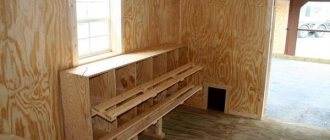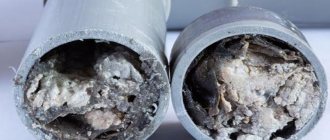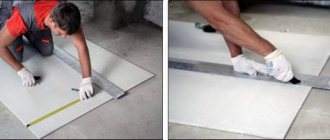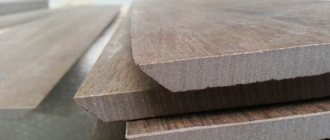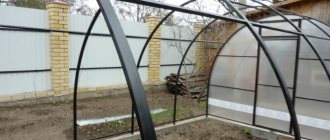There are situations when it is urgently necessary to obtain sawdust (waste from sawing wood) for various household needs, but it is unknown where to get it .
An inexperienced person can buy sawdust too expensive , or completely the wrong type that he needs.
In this article we will talk about where:
- you can get different types of this material;
- you can find a certain type;
- select materials of different quality;
- buy;
- take for free;
- you will also be paid for picking up and removing this waste.
Choosing wood for a smokehouse
The composition of the smoke depends on the physical properties of the wood and combustion conditions. The optimal temperature for the formation of aromatic substances is 300−400 °C. Chips and sawdust are prepared from deciduous and fruit trees. To flavor the smoke, fresh juniper berries, nettles, heather, onion peels, bay leaves, and sage leaves are added to the main raw materials. Anise seeds, bay leaves, cumin, and allspice give excellent results. When choosing wood, it is necessary to take into account the type of product being processed .
Color education
Color is considered the most important indicator of the correct execution of the process. The attractive rich shade is associated with the taste properties of the product. The formation of color during hot and semi-hot smoking is influenced by the action of high temperatures, the type of wood used and the size of its fraction.
Basics of creating a “smoked” color:
- golden yellow shades are obtained from beech, maple and linden chips;
- Acacia gives lemon color;
- oak and alder are painted yellow-brown;
- pear makes smoked meats reddish.
Color is largely determined by the structure and chemical composition of food products. High fat content improves the color and shine of the secondary casing. High humidity makes food grey. More intense coloring occurs in the combustion zone with a high oxygen concentration. The positive effects of smoking are the hardening of the surface and the formation of a shell from light yellow to rich brown.
Aroma and taste
Flavor and aroma sensations are the result of the interaction of the smoking components of smoke with the constituent ingredients of the product. The higher the degree of wood grinding, the richer the chemical composition of the smoke.
Fruit trees and shrubs give unforgettable taste Fresh cherry leaves and hornbeam branches are used as an additive to fatty varieties of sea fish. Young acacia twigs will provide the necessary sharpness. Fish cooked on willow or poplar sawdust does not have a strong taste.
Maple sawdust imbues dishes with a sweetish-smoky aroma. Well-seasoned fuel is suitable for smoking tender poultry, cheese and fruit. Apple wood chips are used for lard. If you have little experience in preparing smoked meats, you need to abandon coniferous wood. The resin fraction will give the food a dark color and a bitter taste, and a layer of soot will remain on the walls of the smokehouse.
Self-production of wood chips
If you have suitable wood, you can make wood chips and sawdust for smoking with your own hands . logs are selected . They have up to 70% natural humidity, which has a positive effect on the smoking process.
To produce a lot of smoke, the shredded wood must smolder, not burn. It is not advisable to use overdried logs. Dry wood burns quickly without forming a smoky coating on the surface, which leads to the rendering of fat in the products. Freshly cut branches give dishes a bright, juicy color, while dry branches give a delicate taste.
The most common way to make wood chips for smoking at home using simple tools. For this you will need:
- saw (electric or manual);
- wood trimmings;
- axe.
Prepare wood chips of the same size, so they will be consumed longer and burn out at the same time. The bark is removed from small tree trimmings. Thin longitudinal plates 2 cm thick are chopped with an ax. Sawdust is taken of medium size, without any admixtures of wood dust and shavings.
Before loading into the smokehouse, wood chips are brought to the required humidity by wetting or drying, depending on the initial state of the material. Dried wood chips are soaked in clean water 2-3 hours before cooking.
Equipment for the production of
The simplest press for making fuel briquettes, made by yourself, has a manual screw drive.
A molding container with perforations is filled with the mixture and placed under the bed; pressure is created by tightening the screw. The design is very simple and there is no point in talking about it in detail, just look at the drawing. Such screw machines for pressing briquettes from sawdust are not very popular due to their low productivity. It takes too much time to load the container, tighten the screw and remove the finished product. It is much faster and easier to squeeze out “bricks” using a homemade press with a long lever and a mechanism for pushing the briquettes out. To speed up the process, you can weld 2 molds to the frame instead of one.
Manual machine for 2 molds with a pipe lever
Some craftsmen can boast of more advanced mechanized equipment. Indeed, a manual machine can be improved and briquette productivity can be increased by installing a hydraulic jack instead of a manual drive. To assemble such a unit, you will have to tinker a lot, but the result will be much better.
Manual machine with hydraulic jack
Note. Even using a hydraulic jack in a homemade press, it will still not be possible to create a pressure of at least 300 bar. Therefore, it will still not be possible to reproduce the factory technology without adding water and binders.
Despite great difficulties in manufacturing the parts, some of the craftsmen managed to assemble a screw press and obtain briquettes of fairly decent quality. This is evidenced by the reviews of such people on the forums. But they all note the high costs of producing screw parts and housings from high quality steel. Again, you can’t do without an electric drive; at the most conservative estimate, a motor with a power of at least 7 kW is required.
Smoking process
Before you light the fire, you need to load the wood chips correctly. It is placed on the bottom of the smokehouse in an even layer. For cold smoking, moistened sawdust is poured over the wood chips. There should not be a lot of air entering through the blower, otherwise they will ignite.
The amount of wood fuel depends on the parameters of the smokehouse and the weight of the product. Cold smoking can last up to three days, so sawdust is added as it smolders. The entire process requires up to 5 bags.
During hot smoking, wood raw materials are loaded so that there is enough of it until the products are ready. During the smoldering process, you cannot mix or load a new batch of wood.
To create thick smoke, the wood chips are piled up. This is necessary at the initial stage of cooking so that the moisture evaporates. Subsequently, the smoke acquires a whitish tint and becomes less abundant. If the wooden dies begin to burn, the smokehouse fills with yellow smoke.
Fish or meat is loaded when sawdust smokes continuously. Before smoking, the products are wrapped in gauze. Harmful resins and soot partially settle on it. At the end of cooking, remove the dirty gauze from the delicacies and wrap them in a clean net. To get rid of the smell of smoke, the products are hung to air in a dry place for 10-14 days.
Smoking is a skill that requires some knowledge and experience. But if you choose the right wood and know how to make wood chips for smoking with your own hands, you can quickly achieve culinary success.
Adding an article to a new collection
Often we don’t appreciate what we have, but sometimes you just have to look around (in our case, go out into the yard) and now you are the happy owner of a universal natural material! Let's talk about using sawdust in the country.
A large amount of sawdust has accumulated on your property, and you don’t know where to put it? We will tell you what to do in such a situation, because sawdust is a multifunctional material. See for yourself!
Binding components
The choice of the optimal binder is made taking into account what component is available and what characteristics it has. The most commonly used materials are:
- Gypsum. The solution sets quickly, so it is often used as a binder. Within 10 minutes, the mixture of sawdust and gypsum hardens, and after a couple of hours it dries completely. The resulting insulation is durable and lightweight. The so-called bridges of cold and all kinds of voids do not appear in it. But if this mixture is used to insulate an external wall, then it is additionally required to cover it. Moisture will contribute to the destruction of thermal insulation from a solution of sawdust and gypsum. This type of insulation is more suitable for internal thermal insulation of buildings.
- Cement. This component is more durable, but more difficult to work with. Sawdust and cement mortar set within 24 hours. This solution is often used for plastering the outside of the house. After the binder component hardens, even water flowing down the walls will not be able to destroy the sawdust-cement layer. The solution is also used to fill ceilings, interior and underground spaces. Cement is gray in color, but it can always be diluted with color and then there is no need to additionally apply decorative plaster to the surface.
- Clay. This is one of the cheapest binder components. But there is a significant drawback: the mixture is completely unstable to humidity. After drying, the solution significantly loses weight as water evaporates. Such insulation is in no way inferior in strength to cement-sawdust (gypsum-sawdust) thermal insulation.
- PVA glue. This component is used as a binder for the further use of insulation in places where frequent exposure to moisture occurs. The glue reliably grips the sawdust, resulting in a durable, hard layer that is not subject to corrosion and rotting. Its strength does not decrease over time, and polyvinyl acetate (hardened adhesive) has excellent steam permeability.
- Manure. A long-forgotten component as a binder, but previously it was used to insulate households. The strength of manure is not as high as that of other binders, but after drying, the manure solution forms a crust that has a porous structure. Therefore, such a thermal insulation layer has excellent thermal conductivity parameters. But it is additionally required to cover it with cement or gypsum mortar or cover it with boards.
- Lime. This component allows you to obtain a durable thermal insulation layer. The mass of sawdust with lime becomes more dense in consistency. This allows you to obtain insulation that will not deform over time. Heat loss is significantly reduced, and rodents in such thermal insulation do not make moves or make nests inside.
The solution is also used for the production of slabs, mats, and sawdust blocks. Their thermal insulation properties are no worse than mineral wool. To make them, they use special molds that you make yourself.
Sawdust flavoring
Due to its excellent absorbent properties, sawdust can be used as a natural flavoring agent. There are two options on how to do this:
- if you have juniper or pine sawdust, pour it into a fabric bag and tie it tightly with a ribbon;
- Soak sawdust from any tree with essential oil and place it in a jar or bag, tie it or cover it with a lid.
Place sachets with fragrant sawdust in the closet where clothes and linen are stored, or place them in the room.
Growing mushrooms on sawdust
Did you know that oyster mushrooms can be grown in the most common sawdust? The substrate is prepared from large hardwood sawdust and straw (you can use feed or sunflower seed husks), mixed in a 3:1 ratio. The components must be processed: soak the mass in hot water for 3-7 hours, maintaining a temperature of 60°C.
Then, when the substrate has cooled, it needs to be squeezed out and placed in layers in a thick transparent plastic bag, sprinkling each layer with crushed mycelium. Several small holes are made in the bag. With proper care, mushrooms will grow in 40-45 days.
Waste briquetting device
Homemade press
If you plan to use heating briquettes for winter heating of a country house in winter or as an alternative fuel in an individual house, it is quite labor-intensive to make them manually.
In this case, it is advisable to make a simple machine that will speed up and facilitate the work. Today, various modifications of machines are available for sale. They differ in functionality, the number of cells in the forms, and the type of drive - manual or mechanical.
All models have one thing in common - they allow you to mechanize the most labor-intensive process - compacting the wet mass in the cells of the mold.
The simplest machine is a metal frame welded from a corner, on which a wooden tabletop painted with moisture-resistant paint is fixed. A “P”-shaped bracket is welded to the frame, between the uprights of which a swinging lever is fixed - a rocker arm, the length of which determines the compression force.
A punch is hinged on the lever, the dimensions of which are slightly smaller than the dimensions of the cells. A mold filled with briquette mass is placed on the countertop and pressed with a punch until the briquettes are given the required density. Moving the mold along the tabletop, the pressing operation is repeated for each cell.
Some “craftsmen” abandon the welded structure and knock together a bracket and frame from boards and thick bars. It all depends on the volume of production.
In order for the press to last long enough, after each pressing operation it should be cleaned of adhering mass.
If the gardener has the opportunity to obtain or make a vibrating plate, then a press is not required. The sawdust-clay mass is compacted due to vibration.
Sawdust compost
Sawdust is used as fertilizer for many plants. There is one “but” - fresh sawdust cannot be used, as it will “pull” the nitrogen necessary for crops to grow from the soil. The way out of the situation is to prepare compost from sawdust.
If the compost is “filled” with sawdust, this will speed up its maturation. Sawdust improves the structure of the compost: they make it looser and increase air permeability. Another “plus” is that such compost will warm up faster in the spring. At the beginning of summer, start a compost heap, laying out sawdust (10 kg) in layers. Each layer must be shed with water in which fertilizers are dissolved:
- 130 g urea;
- 10 g superphosphate;
- 70 g potassium chloride.
Also, each layer needs to be sprinkled with lime (150 g of lime will be needed for a pile 1.5 m high). When the compost is ready, it is added to the soil at the rate of 2-3 buckets per 1 sq.m. The optimal time to add compost is late summer.
Construction features and pitfalls
Sawdust concrete is a rather specific material, so when building a house from it, you must follow certain rules and act in full accordance with the recommendations of experienced builders. Even a slight deviation from the recipe or violation of the specifics of construction work can reduce the quality of the final structure.
On forums on the Internet you can often find discussions about whether sawdust concrete can be used to build a foundation. The answer is clear: of course not! The base is made of concrete, stone, brick. There are also metal pile foundations.
In general terms, building a house from sawdust concrete has the following features:
- The foundation must be raised above the ground in such a way that water contained in the soil does not reach the walls of the building; Foundation waterproofing should be carried out responsibly.
- A prerequisite for building a high-quality house made of sawdust concrete is the reinforcement of corners; It wouldn’t hurt to reinforce the walls as well. The best option is to install protective “casings” made of concrete or wood in the corners of the house.
- The openings of doors and windows must not be left open: they must be enclosed in a reinforcement frame, with lintels placed on top.
- If external walls are erected using a frameless method, an upper frame in the form of a monolithic concrete belt with the addition of metal reinforcement is required. The belt will relieve the roof load on the sawdust concrete structure. If a frame construction method is used, then sawdust concrete acts as a filler between the posts. In this case, it is necessary to construct a harness from timber.
- The roof of the house made of sawdust concrete also has its own characteristics. The overhangs should be wide: this is necessary to protect the walls from moisture. It is very important to build a well-thought-out drainage system with water flowing into a reliable drainage or storm drain. Water should not be allowed to collect under the walls of the house.
- Sawdust-based concrete structures require strong external protection. The hygroscopicity of building materials can cause serious problems, so the top coating must be continuous and completely waterproof.
Watch the video: how to rearrange the formwork. A house looms!
Sawdust mulch
This natural material is used to mulch beds, soil under berry bushes, tree trunks, etc. For mulching, you can use semi-rotted or rotted sawdust.
Since fresh sawdust is harmful to plants (they absorb nitrogen from the soil), they need to be prepared before use: pour 3 buckets of sawdust, 200 g of urea and 10 liters of water onto a spread film in layers. The top of the sawdust is covered with a film and pressed down with something heavy. After 2 weeks, the sawdust can be used.
Lay out rotted sawdust in a layer of 5-10 cm. Mulching with sawdust helps control weeds and helps retain moisture in the soil.
Vacuum drying
Vacuum and microwave drying technologies have a common characteristic - water is evaporated at a temperature higher than the boiling point of water. When drying using the vacuum method, there are two phases of water transformation: transition from liquid to steam, from steam to liquid.
This method involves the transfer of steam and water to the outer surface of the raw material, and the evaporating steam escapes into the atmosphere. When water evaporates from the surface of the raw material, its temperature drops sharply to the surrounding temperature, and the drying process immediately slows down. To accelerate it, it is necessary to destroy the upper boundary layer on the surface of the raw material or significantly narrow it.
Today, the dominance of the following types of vacuum drying chambers is observed:
- — with heating of the material in a cyclic manner;
- - with heating of raw materials by contact method.
Note that in the first case, the raw materials are first heated in the chambers and then vacuumed. Several such cycles are repeated until completely dry. Heat is transferred convectively.
The noticeable disadvantages of the vacuum method include the long duration of the drying process, high energy consumption for constant heating/cooling of raw materials and drying chambers.
Sawdust for smoking
If you are the happy owner of your own smokehouse, then you probably know that sawdust is an excellent material for kindling.
Sawdust from alder, oak and fruit crops: apple, cherry, apricot, sea buckthorn are best suited for a smokehouse. But the most unsuitable trees, the sawdust of which should not be used for these purposes, are aspen and conifers.
Sawdust for smoking must be of high quality, so before use, make sure that there is no mold or traces of chemical treatment on it. Soak the sawdust in warm water for 4-5 hours, then dry (optimal humidity 50-70%).
Application area
The beginning of the history of using sawdust in low-rise construction goes back to those distant times, when they began to be added to clay and used to build floors from this mixture in village houses.
Such floors can be called ideal: they served for a very long time, were not damaged in any way, had no disadvantages and had very significant advantages - low cost and high thermal insulation.
Taking this ancient technology as a basis, modern industry began to produce the same high-quality building materials - granules, wood concrete, concrete with sawdust, wooden blocks.
Sawdust also continues to be used in low-rise construction. Private developers are especially interested in this material, who insulate walls, floors, ceilings with sawdust, and also use them for other purposes as needed.
Today it is impossible to find a cheaper thermal insulation material than sawdust. To insulate roofs, ceilings, interfloor ceilings, floors and wall structures, very different building materials are used. But it is the mixture of cement, gypsum or lime with shavings and sawdust that is extremely economical when insulating any building structure.
Sawdust for garden paths
A garden path made from sawdust is a simple, cute and convenient way to decorate your garden. Dig a shallow trench of any shape (about the size of a shovel), fill it with sawdust and compact it. The advantages of such a track:
- it can be made as winding as desired;
- water will not stagnate in it;
- Weeds will not soon break through the sawdust.
Keep in mind that over time, the sawdust in the path will sag, so you will have to add it every year.
Sawdust for warm beds
Sawdust is useful for constructing organic trenches - the so-called warm beds. In such beds, plants are very comfortable, they receive more nutrients. A layer of scalded sawdust is laid out at the bottom of the trench (depth 40-50 cm), covered with a cloth and watered with a pink solution of potassium permanganate.
The next layer is plant debris (for example, foliage, plant tops), which are sprinkled with ash (1-2 cups per 1 sq.m.). Then a mixture is poured into the trench, which includes humus or peat (5-6 buckets), sand (1 bucket), 1 tbsp. urea, 2 cups of ash, 1.5 tsp. boric acid, 1 tbsp. superphosphate, 1 tsp. potassium sulfate, 1 tsp. zinc sulfate.
Sawdust as a substrate
Sawdust will make the soil looser, which means more oxygen will flow to the roots of the plant. For the substrate, you need to take old sawdust or add urea to fresh ones (for 1 bucket - 40 g of fertilizer). This will prevent the sawdust from taking nitrogen from the plants. To prepare the seedling substrate, mix the following ingredients:
Mixture 1: sawdust, lowland peat, river sand (in a ratio of 1:2:1).
Mixture 2: sawdust, garden soil, lowland peat (1:1:2).
To the finished mixture (per 10 liters of substrate) add 40 g of double superphosphate, 1/2 cup of ash, 15 g of ammonium nitrate and 40 g of potassium sulfate.
DIY sawdust concrete
This environmentally friendly, durable and frost-resistant material is used for the construction of houses and country houses. To make it you will need a concrete mixer. The sawdust is dried and sifted through a sieve with 1x1 cm cells, then mixed with cement and sand. Next, you need to add limestone or clay dough to the mixture and mix, pour water in several stages (after each portion, the mixture needs to be mixed).
Amount of ingredients for medium-density sawdust concrete: 20 kg of sawdust, 20 kg of sand, 10 kg of cement, 15 kg of lime (clay).
Construction of a monolithic house
Monolithic construction is convenient and quick. Recently, this technology has been used extremely widely. Sawdust concrete is also used in monolithic construction. Before erecting a building, it is necessary to carefully waterproof the foundation with two layers of roofing material.
If the foundation is low, it must be raised with brickwork. After this, formwork made of wood, plywood, and metal sheets is installed on the base. The height of the formwork panels is approximately 60 cm.
Simultaneously with pouring the first layers of sawdust concrete, wooden or metal posts the height of the entire proposed wall are driven into the ground on both sides of the foundation. The columns are connected with bars and tied together with wire. Once the pouring is complete, the stakes cannot be removed; they will be needed to secure the panels when reinstalling the formwork. In addition, with the help of these stakes it will be possible to secure the sheathing during facing work.
The sawdust concrete mixture is poured in layers no more than 15 cm thick. Each layer is compacted with a special device. In one construction day, you can pour no more than 30 cm of material, that is, no more than 2 approaches. After this there is a week break. Every 40 cm of wall height is reinforced longitudinally. Chain-link mesh or wooden slats are used as reinforcement. A “belt” of timber or brick is mounted on the finished cast structure. The “belt” serves as a support for the roof.
Moisture protection of walls is of great importance. The builder will have to cladding the facade with high quality. The roof is made with wide overhangs. However, the costs of building a house made of sawdust concrete will pleasantly surprise you: they are significantly lower than with traditional construction. The building, unlike brick and concrete structures, does not require additional insulation: 40-centimeter masonry can easily withstand 35-degree frosts.
Watch the video: how to assemble a formwork frame for pouring sawdust concrete
Crafts from sawdust
Sawdust is an excellent material for children's (and not only) creativity. You can sculpt figures from sawdust by preparing dough for this (2 cups sawdust, 1/2 cup starch, 1/2 cup water, 5 tbsp PVA glue, 1 tsp vegetable oil). You can also decorate a plasticine figurine with large sawdust, making, for example, feathers for a bird: carefully stick the sawdust into the figurine, creating “plumage.” Small sawdust can be painted in different colors and made into a picture by gluing it onto cardboard.
Plastering with sawdust
Sawdust plaster is also called warm plaster. With its help, you can insulate the slopes of window and door blocks, finish internal walls, as well as facades. In addition, warm plaster insulates noise well. You will need paper pulp (such as shredded old newspapers), cement and sawdust. The ingredients are mixed in a ratio of 2:1:3 and diluted with water, after which they are thoroughly mixed again.
We hope that our material was useful to you. Perhaps our list is missing an interesting way to use sawdust in the country that you know about? Share in the comments!
Material for construction work
Sawdust is a time-tested, environmentally friendly, affordable, cheap natural material, filler and insulator. Once upon a time, walls were plastered with a viscous mass of small wood waste and manure. And today the roof of the bathhouse is insulated by covering the floor of its attic with these materials mixed with water and clay. The inside walls of houses are filled with sawdust, cement, clay, adding ash, vitriol, lime, boric acid (to protect against rotting, fire, mice and bugs).
Blocks made from homemade sawdust concrete can be used in the construction of various buildings at any dacha.
